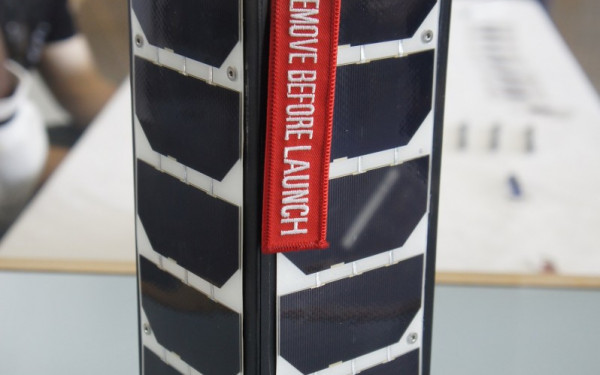Sky Rockets (Almost) in Flight
Space Concordia’s Winning Satellite Still in Need of Funding
It can be incredibly expensive to launch a satellite into space.
Despite winning the inaugural Canadian Satellite Design Challenge last October, Space Concordia, a student-run engineering club with a few dozen members, still needs to secure at least another $13,800 to complete its mission towards the final frontier.
The bi-annual competition, held by aerospace firm Geocentrix Inc., will cover launch and fueling costs for the project, but engineering and equipment costs are extra.
“The prize for the competition [was] getting our satellite launched, and so the competition organizers are the ones who essentially help find funding for us to get launched,” explained Nicholas Sweet, president of Space Concordia.
The projected final cost of the satellite is expected to be roughly $115,000, according to figures provided by Space Concordia. A request for funding from the Concordia Student Union is on the agenda for this week’s council meeting, set for March 13.
Though the amount is yet to be decided, Space Concordia VP External Gregory Gibson says he believes the CSU’s support could total $15,000, based on funds available in past budgets.
Others are helping fund the project—both inside and outside of the university.
“There’s a lot of internal funding available we’re looking into,” said Gibson. “But we’re also going to the industries and asking for money in return for sponsorship opportunities.”
Xiphos Technologies Inc. has already provided Space Concordia with $16,000 for equipment, while AIG, PlanBox, Dassault and other companies have donated a combined $4,000, according to documents provided by the club.
The team also received $31,939.21 over 2011 and 2012 from the Engineering and Computer Science Faculty’s equipment fund, and $3,383.44 from the Engineering and Computer Science Association as of the Fall 2012 semester.
While some money is still outstanding, Space Concordia submitted a proposal for launch through the European Space Agency on March 1—but that’s just the beginning of the process, according to Sweet.
“This is the first of many rounds of documentation being given to ESA,” he said.
“It’s going to be one of those mildly bureaucratic things; we just send long documents back and forth—but then the fun starts.
“Hopefully, if we pass every single checkpoint, we can get in with the ESA scientists and engineers,” he added.
If accepted, the satellite would be launched by ESA some time this year, with a tentative timeframe of August, according to Sweet.
Known as a 3U Cubesat—a low-cost cube-shaped miniature satellite typically 34×10×10 cm—Space Concordia’s winning design plans to explore the South Atlantic Anomaly, an area of intense radiation in Earth’s magnetic field.
A second design challenge was announced by Geocentrix last fall. With their second design, ConSat-2, and a projected $80,000 in costs, Space Concordia hopes to test self-healing, plastic-like compounds in space, according to acting student team leader Mehdi Sabzalian.
“It hasn’t been tested in space yet, so that’s where we come in,” said Sabzalian.
The self-healing material was created and patented by Dr. Suong Hoa, director of the Centre for Composites at Concordia, along with the Canadian Space Agency and MPB Technologies Inc., a Montreal-based company working in communications, robotics and laser technology.
Space Concordia was originally founded in November 2010 in order to participate in the Canadian Satellite Design Challenge.
An earlier version of this article referred to Dr. Suong Hoa as the ConSat-2 project leader and the sole creator and patent owner of the primary payload of the ConSat-2 when it should have referred Dr. Scott Gleason as project leader and credited MPB Technologies Inc. and the Canadian Space Agency along with Dr. Hoa. The story has been updated to reflect the correct information. The Link regrets the error.

_900_600_90.jpg)
_600_832_s.png)


_600_375_90_s_c1.jpg)

2_600_375_90_s_c1.jpg)